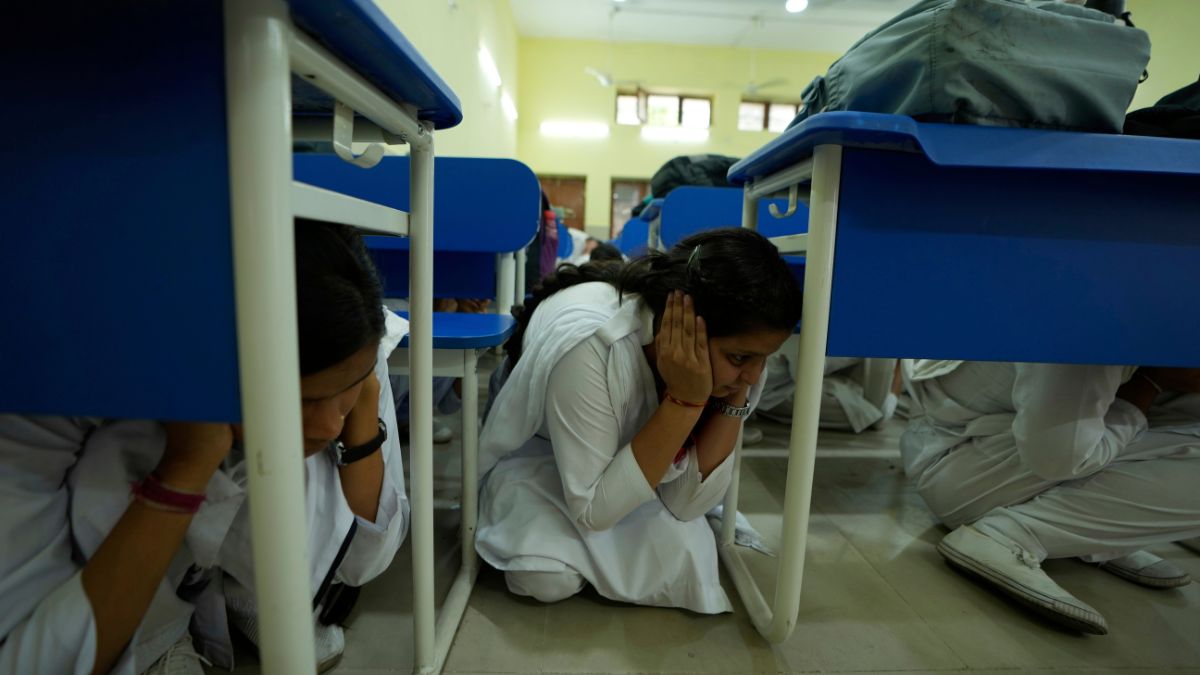India is set to hold a nationwide security drill on Wednesday (May 7) as tensions with Pakistan mount in the wake of the Pahalgam terror attack. The Ministry of Home Affairs (MHA) has directed all states to carry out mock drills, citing the “new and complex threats” after the April 22 massacre in Jammu and Kashmir that took 26 lives.
Such elaborate drills were last conducted in India in 1971 when India and Pakistan went to war on two fronts. Along with the police, paramilitary and defence forces, authorities will engage students, government and private employees, hospital staff, railway and metro officials in the security exercise.
Here’s your complete guide to the mock drill on May 7.
What will happen in the mock drill?
The Centre has asked all states and Union Territories to conduct mock security drills across 244 Civil Defence Districts. However, more than 300 such districts with vital installations like nuclear plants, military bases, refineries, and hydroelectric dams will be carrying out the exercise, sources told PTI.
Civil Defence Districts are those areas that the government selects for implementing civil defence programmes. These regions are demarcated on the basis of the location of towns or districts, such as those near borders; the site of vital installations, including nuclear plants and important government buildings; and critical infrastructure like key highways or ports.
During the mock drill, air raid warning sirens will be heard. The MHA’s direction also mentions “provision for crash blackout measures” in selected areas and training civilians on safety protocols in the event of an aerial or ground assault.
Other measures include assessing the readiness of control rooms, organising rehearsals of evacuation plans and camouflaging sensitive installations such as power plants. It will also entail cleaning of existing bunkers and trenches, activating Civil Defence Services like warden services, firefighting, and rescue service, as well as operationalising hotline/radio communication links with the Indian Air Force (IAF).
The Civil Defence Act of 1968 empowers the government to control people’s movement, impose curfews, close roads, ports, and transport services in case of emergencies.
How will it affect the public?
The crash blackout measures are expected to lead to sudden power cuts for a brief period. Blackouts are implemented during conflicts to protect people and vital infrastructure against the enemy’s line of fire.
According to a 2003 document titled ‘General Principles of Civil Defence in India’, “no light shall be visible at a height of 5,000 ft above ground level under normal visibility conditions”.
The darkness will make it difficult for advanced high-speed aircraft to attack their target. “The anxiety level of the enemy pilot in the cockpit would be more if the area is dark,” it says.
Power cuts are to be done gradually, with curbs applying to street lights, factories and lights from vehicles. Illuminated advertisements in vulnerable areas are also to be shut down when civil defence measures are implemented.
Lights in buildings are allowed to be switched on only if they are covered with opaque material. The mock drill advisory states that people should put up blackout curtains or blinds on all windows. Outdoor lights must be turned off during drills, and no light should be visible from outside.
People are also advised not to step out unnecessarily during the drills.
ALSO READ: When India 'hid' the Taj Mahal from Pakistani air forces during 1971 war
After an air raid warning, all vehicles in a particular area will be stopped and people will be expected to take shelter and other precautionary measures. Those living in vulnerable villages and towns could be evacuated and shifted to shelters, bunkers or trenches.
“Identify the nearest shelter locations, such as basements, underground car parks, or designated safe zones,” the mock drill advisory states. After hearing the siren, people should immediately take cover in the nearest shelter.
Civilians should pay attention to only official announcements and not panic when they hear air raid warning sirens.
The public may also experience communication disruptions during the pan-India mock drill. The advisory says that non-essential use of mobile phones should be avoided to keep “communication lines free for emergencies.”
People should also prepare a basic kit with water, non-perishable food items, a flashlight, and basic medical supplies. Sources told India Today, there will be instructions to keep cash handy to be ready for situations if mobile devices and digital transactions fail.
Those who live near critical installations are advised not to share sensitive information about the facility. They should also report any unfamiliar activity and not interfere with camouflaging activities.
A senior official who is in charge of civil defence told CNN-News18 that the Geneva Convention requires the protection of civilians in times of war. “So, we must empower them, train them to protect themselves. The last such training was in 1999 and before that in 1971. Most young people of this generation are unaware of such a situation. Hence the necessity of the drill," the official added.
With inputs from agencies


)

)
)
)
)
)
)
)
)



